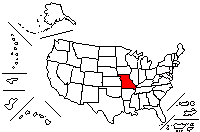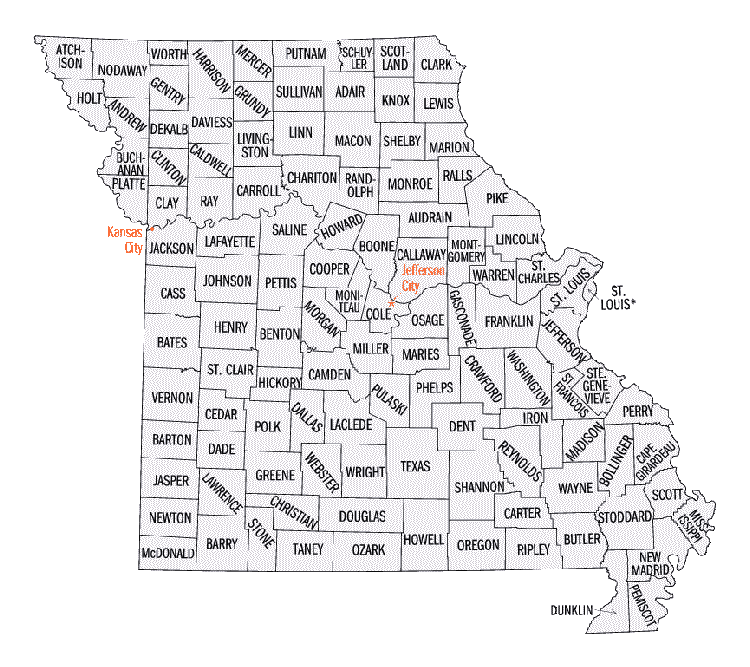
 |
|

















Missouri Waltz |
Vals Missouri escrito por James Royce Shannon música por John Valentine Eppel arreglo musicap de Frederick Knight Logan Susurra un Adiós, mi bebé, la hora de dormir ya viene pronto; Reclina tu cabeza sobre mi pecho, mientras que mamá tararea una tonada; El hombre de arena está llamando, donde caen las sombras, mientras que la suave brisa suspira como un largo día que se ido. Allá en Missouri en donde oí esta melodía, cuando era un pequeño niño en la rodilla de mi mamá; Los padres la tarareban, sus banjos eran sonados tan dulce y suave. Dum , Dum, Dum , Dum , Dum , me parece oir sonar los banjos otra vez, tara, rará, rará, tara, rará, rará, tara, rará, esa misma vieja melodía. tara, rará, rará, tara, rará, rará, tara, rará, esa misma vieja melodía. Escuchas esa triste melodía, que solo te persigue, a lo largo de todo el día, y tu sueñas, que regresas a Dixie, Cuando escuchas esa canción. Susurra un adiós, mi bebé, ve a dormir en la rodilla de mamá, viaja de nuevo a "Dixieland" en tus sueños conmigo otra vez; Parece como si tu mamá estubiera allí otra vez, y los padres tarareando ese viejo refrán. Allá en Missouri en donde aprendí este arrullo, cuando las estrellas brillaban y la luna estaba en lo alto Parece escuchar un susurro como muchos días atrás cantando : Susurra un Adiós. |


Flag:
Centered on red, white and blue fields is the Missouri state seal. It is encircled by
a blue band with twenty-four stars representing the number of states in 1821. The stars in
the inner circle have the same meaning. Two huge grizzly bears support the circular shield
in the center which has three parts:
The motto "United We Stand, Divided we Fall"
The right section representing the United States
The left section containing a moon representing a new state and a grizzly bear standing
for courage.
The flag was designed by Mrs. Marie Elizabeth Oliver of Cape Girardeau, Missouri. Flag
adopted 1913.
Bandera:
Centrado en un campo rojo, blanco y azul está el escudo de Missouri. Y al rededor del mismo
tiene una cinta en azul con 24 estrellas representando el número de estado en el 1821. Las estrellas
en el circulo interior significan lo mismo. Dos fuertes osos grises aguantan el escudo
circular el cual, en el centro, tiene tres partes:
Le lema "Unidos nos sostendremos, Divididos caeremos"
La sección de la derecha representan a los Estados Unidos
La sección de la Izquierda conteniendo una luna representan al nuevo estado y un oso gris
representa la valentía.
La bandera fué diseñada por Mrs. Marie Elizabeth Oliver de Cabo Girardeau, Missori y fué adoptada
en el 1913.

Missouri
Missouri (se pronuncia Mis-sú-ri en inglés y español)
Capital City: Jefferson City
National: Missourians
Admission to Statehood: August 10, 1821
Border States: Arkansas / Illinois / Iowa / Kansas / Kentucky / Nebraska /
Oklahoma / Tennessee
Motto: Salus Populi Suprema Lex Esto (“The Welfare of the People Shall Be the Supreme Law”)
This motto has always been found on the state seal, which was adopted in 1822.
Its source is Cicero’s De Legibus.
Nickname: Show Me State
Origin of state's name: Named by americans after Missouri Indian tribe whose name means
"town of the large canoes"
Ciudad Capital: Jefferson City - Ciudad Jefferson (se pronuncia Jéf-fer-son en inglés y español)
Gentilicio: Misoureños
Admición como estado: 10 de agosto de 1821
Estados limítrofes: Arkansas / Illinois / Iowa / Kansas / Kentucky / Nebraska /
Oklahoma / Tennessee
Lema: Salus Populi Suprema Lex Esto ( El bienestar de las personas será la ley suprema)
Este lema siempre se ha encontrado en el sello del estado el cual fué adoptado en el 1822.
Su fuente es "Cicero’s De Legibus".
Cognómento: Estado del Presentame
Origen del Nombre: Nombrado por los americanos por la tribu india Missouri cuyo nombre
significa "pueblo de las largas canoas">


The Seal:
The helmet above the shield represents state sovereignty, and the large star atop the helmet
surrounded by 23 smaller stars signified Missouri's status as the 24th state. The cloud around
the large star indicates the problems Missouri had in becoming a state. The whole state seal
is enclosed by a scroll bearing the words, "The Great Seal of the State of Missouri."
El casco sobre el escudo representa soberanía del estado, y la
estrella grande encima del casco rodeado por 23 estrellas más
pequeñas significó el estado de Missouri como el 24to estado. La
nube alrededor de la estrella grande indica los problemas Missouri
tenía en convertirse en un estado. El sello entero del estado es
incluido por una voluta que lleva las palabras, " el gran sello del
estado de Missouri."
The Great Seal of the State of Missouri was officially adopted by the General Assembly on
January 11, 1822. Judge Robert William Wells, who was also a congressman, designed the seal.
The center of the seal contains the bald eagle symbol of the nation on the right side, and,
on the left, symbols representing the state. A grizzly bear represents strength and bravery;
a crescent moon represents the newness of statehood and the potential for growth. Surrounding
these symbols is the motto "United we stand, divided we fall". Two mighty grizzly bears support
this center shield. A scroll carries the state motto, "Salus Populi Suprema Lex Esto",
or "Let the welfare of the people be the supreme law." Missouri's date of statehood, 1820,
is placed in Roman numerals below the scroll. A star representing each of the other states
of the Union (Missouri became the 24th) graces the top portion of the seal. The outer circle
of the seal bears the words "The Great Seal of the State of Missouri".
El gran sello del estado de Missouri fue adoptado oficialmente por la
Asamblea General el 11 de enero de 1822. Fué diseñado por el
Judge Robert William Wells,
que era también miembro del Congreso. El centro del sello contiene el
águila calva el simbolo
de la nación a la derecho y a la izquierda, los símbolos que
representan al estado. Un oso gris representa fuerza y valor; una
luna en creciente representa la novedad de la estadidad
y el potencial para
el crecimiento. Rodean estos símbolos el lema "Unidos nos sostendremos,
divididos caeremos". Dos poderosos osos grises apoyan
el escudo des centro. Un pergamino lleva el lema del estado, "
Salus Populi Suprema Lex Esto ", o " dejen que el bienestar de las personas sea
la suprema ley." La fecha de la estadidad de Missouri, 1820, se pone en
los números romanos debajo del pergamino. Una estrella representa
cada uno de los otros estados de la unión (Missouri se
convirtió en el 24to) adorna la porción superior del sello. El círculo
externo del sello lleva las palabras " el gran sello del estado de
Missouri".

History
Missouri is a midwestern state of the United States, located near
the country's geographic center at the confluence of the two longest
rivers in the United States--the Mississippi and the Missouri.
Situated where North meets South and where the industrial East
gives way to the plains of the West, Missouri exhibits characteristics
of all these areas. It is bordered on the north by Iowa; on the east
by Illinois, Kentucky, and Tennessee; on the south by Arkansas; and
on the west by Nebraska, Kansas, and Oklahoma. During the 19th
century Missouri served as a springboard for countless westward-bound
settlers, and the state's cities were long the westernmost outposts
of U.S. civilization. Missouri, an Algonquian word meaning "people
with big canoes," was the name given to the Indians living near the
mouth of the Missouri River.
European exploration began with the passage of Father Jacques
Marquette and the trader Louis Jolliet down the Mississippi
in 1673. In 1682 the Mississippi Valley was claimed for France
by Robert Cavelier, sieur de La Salle*, who named the territory
Louisiana. The first permanent white settlement in what is now
Missouri was made by the French at Sainte Genevieve in the 1740s.
French settlement in the 18th century was based on lead mining and
fur trading, of which St. Louis (founded 1764) became the center.
France ceded the region to Spain in 1762, but Spanish control was
never more than superficial. The Spanish did, however, permit
settlement from east of the Mississippi, and by 1800 most of the
new settlers were from Kentucky and Tennessee.
Spain retroceded the region to France in 1800, and in 1803, Missouri,
along with the rest of the Louisiana territory, was sold to the United
States ( SEE LOUISIANA). Missouri was made a U.S. territory
in 1812.
Statehood was achieved in 1821 by way of the Missouri Compromise**
(1820), which permitted Missouri's entry into the Union as a slave
state. In 1837 the six northwestern counties were purchased from the
Indians and added to the state by the Platte Purchase.
The Civil War and Economic Growth
By the mid-19th century slavery was becoming uneconomical,
and immigrants from free states and from Europe, especially Germany
and Ireland, had modified the social structure. Nonetheless,
slavery remained a controversial issue in the state. The case
of Dred Scott v. Sandford***, which reached the U.S. Supreme Court
in 1856-57, began in Missouri. The moderate antislavery stance
of Missouri's longtime (1821-51) senator, Thomas Hart Benton,
cost him his political career.
Despite the strong block of proslavery sentiment, a Missouri state
convention voted against secession in 1861. Several major Civil War
battles took place in the state, however, and guerrilla fighting was
bitter, bloody, and statewide. Violence continued after the war in
the activities of such outlaws as Jesse James****. The state government
was troubled by extremist groups immediately after the war, but
stability was achieved in the 1870s.
After the Civil War, railroad building and the renewed westward
movement of Americans encouraged industry and urban growth.
Following a new influx of foreign immigrants, St. Louis grew
to become the nation's fourth-largest city in 1900.
* The French fur trader and explorer Rene Robert Cavelier,
sieur de La Salle, was the European discoverer of the lower
Mississippi.
**The Missouri Compromise of 1820-21 was an attempt to solve the
sectional disputes between free and slave states in the United States.
*** The decision of the Supreme Court of the United States in Dred Scot
v. Sandford (1857) held that a black slave could not become a citizen
under the U.S. Constitution. Dred Scott (c.1795-1858), a slave in
Missouri, had been taken by his owner, John Emerson, into Illinois,
where slavery had been prohibited by the Northwest Ordinance of 1787,
and into the Louisiana Territory, where slavery was forbidden by the
Missouri Compromise.
**** Jesse James, b. Clay County, Mo., Sept. 5, 1847, d. Apr. 3, 1882,
one of the most famous outlaws of the American West, acquired a
Robin Hood reputation among the people of his region. At the age
of 15, during the Civil War, he joined a band of pro-Confederate
guerrillas led by William C. Quantrill. After the war he formed a
gang with his brother, Frank, and several other men.
After his return to Missouri, Scott brought suit
(1846) against Emerson's widow, claiming that he was free by reason
of his residence in free territory. The Missouri supreme court ruled
against him, but after his ownership was transferred to Mrs. Emerson's
brother, John F. A. Sanford (the name was misspelled in legal records)
of New York, Scott brought a similar suit in federal court, based on
diversity of state citizenship. That court found (1854) that Scott was
Sanford's slave, but Scott's lawyers appealed to the Supreme Court,
which finally heard the case in 1856-57.
Its decision was awaited with
much interest by the nation because it had crucial bearing on the
sectional controversy concerning slavery in the territories.
The court's decision, reached by a seven-to-two vote, was that
Scott was not a citizen and thus had no right to sue in the federal
courts.
Although all nine justices wrote opinions, that of Chief
Justice Roger B. Taney, delivered as the opinion of the court, was
the most important. He made three points. ----First, he observed
that Negroesslave or freewere not included and were not intended
to be included in the category of "citizen" as the word was used
in the U.S. Constitution for the purpose of suing in the federal
courts. Second, he argued that Scott had not become free by virtue
of his residence in a territory covered by the Missouri Compromise,
since that legislation was unconstitutional. Third, whatever may have
been the temporary effect of Scott's sojourn in Illinois, Scott had
ultimately returned to Missouri, where his status depended on Missouri
law.
This was viewed as a proslavery decision by the abolitionists, and the
case probably hastened the coming of the Civil War. That issue aside,
it was the second time that the Court had declared an act of Congress
unconstitutional, the first having occurred 54 years earlier,
in Marbury v. Madison.
Historia
Missouri es un estado del oeste medio de los Estados Unidos,
situado cerca
del centro geográfico del país en la confluencia de los dos ríos
más largos en los Estados Unidos -- el Mississippi y el Missouri.
Situado donde el norte y el sur se unen y donde el este industrial
lleva a los llanos del oeste, Missouri exhibe características de
todas estas áreas. Es rodeado al norte por Iowa; en el este
por Illinois, Kentucky, y Tennessee; en el sur por Arkansas; y en el
oeste por Nebraska, Kansas, y Oklahoma. Durante el diecinueveavo
siglo Missouri sirvió como trampolín para incontables colonos que iban
al oeste, y las ciudades del estado fueron los más grandes
puestos de avanzadas del lejano oeste de la civilización de los
ESTADOS UNIDOS.
La exploración europea comenzó con el paso del padre Jacques
Marquette y del comerciante Louis Jolliet en el Mississippi en
1673. En 1682 el valle de Mississippi fue reclamado por Francia por
Robert Cavelier, el sieur de La Salle*, que nombró el territorio
Luisiana. El primer establecimiento blanco permanente en cuál ahora
es Missouri fue hecho por los franceses en Saint Genevieve en el
1740s.
El establecimiento francés en el décimo octavo siglo fue basado en
minería y el comercio de pieles, de los cuales St. Louis
(fundada 1764) se convirtió en el centro. Francia cedió la región
a España en 1762, pero el control español fué más que
superficial. Los españoles, sin embargo, permitieron el
establecimiento al este del Mississippi, y antes de 1800 de los nuevos
colonos eran más de Kentucky y de Tennessee.
España devolvió la región a Francia en 1800, y en 1803, Missouri,
junto con el resto del territorio de Luisiana, fue vendida a los
Estados Unidos (VER LOUISIANA).
Missouri fue hecho un territorio de
ESTADOS UNIDOS en 1812.
La estadidad fué alcanzado en 1821 por el compromiso de Missouri **
(1820), que permitió la entrada de Missouri en la unión como estado
esclavista. En 1837 los seis condados del noroeste fueron comprados a
los indios y agregados al estado por la compra de Platte.
La guerra civil y el desarrollo económico
Por siglo 19 la esclavitud llegaba a ser poco económica, y
los inmigrantes de estados libres y de Europa, especialmente de
Alemania y de Irlanda, habían modificado la estructura social. No
obstante, la esclavitud seguía siendo una cuentión polémica en el
estado. El caso de Dred Scott v. Sandford ***, que alcanzó el
Tribunal Supremo de ESTADOS UNIDOS en 1856-57, comenzó en Missouri.
La postura moderada del senador antiesclavista Thomas Hart Benton
le costó su carrera política.
A pesar del bloque fuerte del sentimiento de proesclavistas, una
convención del estado de Missouri votó contra el secession en 1861.
Varias batallas importantes de la guerra civil ocurrieron en el
estado y la lucha de la guerrilla era amargo, sangriento,
y a lo largo y ancho del estado. La violencia continuó después que
terminó
la guerra en las actividades como de los grupos
extremistas de Jesse
James**** y que preocupó al gobierno del estado, pero la estabilidad fue alcanzada
en el 1870s.
Después de la guerra civil, la construcciones del ferrocarril y el
renovado
movimiento el oeste de americanos animaron al crecimiento
industrial y urbano. Después de una nueva afluencia de
inmigrantes extranjeros, St. Louis se convierte en la cuarta ciudad
más
grande de la nación de 1900.
* El comerciante y el explorador franceses Rene Robert Cavelier,
sieur de La Salle, fué el descubridor europeo del bajo
Mississippi.
** El compromiso de Missouri de 1820-21 era una tentativa de
solucionar los conflictos seccionales entre los estados abolicionistas y
esclavistas en los Estados Unidos.
*** La decisión del Tribunal Supremo de los Estados Unidos en Dred
Scot v. Sandford (1857) sostuvo que un esclavo negro no podría ser
un ciudadano bajo constitución de ESTADOS UNIDOS. Dred Scott
(c.1795-1858), un esclavo en Missouri, había sido tomado por su
dueño, John Emerson, en Illinois, en donde la esclavitud había sido
prohibida por la ordenanza del noroeste de 1787, y en el territorio de
Luisiana, donde la esclavitud fue prohibida por el compromiso de
Missouri.
**** Jesse James, uno de los más famosos criminales del
oeste americano, adquirido una reputación de Robin Hood entre la
gente de su región. En la edad de 15, durante la guerra civil, él
se unió a una banda de guerrillas pro-Confederadas conducidos
por Guillermo C. Quantrill. Después de la guerra él formó a
una ganga con su hermano, Frank, y varios otros hombres.
Después de que regresara a Missouri, Scott demandó (1846)
a la viuda de Emerson, reclamando que él era
libre por causa de su residencia en territorio libre. El Tribunal
Supremo de Missouri decidió contra él, pero después de que su
propiedad fuera transferida al hermano de señora Emerson, John F. A.
Sanford (el nombre fue deletreado mal en expedientes legales) de Nueva York,
Scott llevó una demanda similar a la corte federal, basada en la
diversidad de la ciudadanía del estado.
Esa corte encontró (1854)
que Scott era esclavo de Sanford, pero los abogados de Scott abrogaron
al Tribunal Supremo, que finalmente oyó el caso en 1856-57. Su
decisión fue aguardada con mucho interés por la nación porque
tenía crucial importancia a la controversia seccional referente a
esclavitud en los territorios.
La decisión de la corte, alcanzada
por a siete--dos a voto, era que Scott no era un ciudadano y no tenía
así ninguna derecha de demandar en las cortes federales. Aunque las
nueve jueses escribieron las opiniones, la opinion del juez en jefe fué
la más importante. Él hizo tres puntos. ----primero, él observó
que el negro esclavo o propiedad no incluida y no fué pensado ser
incluido
en la categoría de " ciudadano " mientras que la palabra fue
utilizada en la constitución de ESTADOS UNIDOS con el fin de demandar
en las cortes federales. En segundo lugar, él discutió que Scott no
se hubiera convertido en hombre libre en virtud de su residencia en un
territorio cubierto por el compromiso de Missouri, esa legislación
era desde entonces inconstitucional. Tercero, lo que puede haber sido
el efecto recidencia temporal de Scott en Illinois, Scott había
vuelto en última instancia a Missouri, en donde su estado dependió
de la ley de Missouri.
Esto fué visto como una decisión pro esclavistas
por los abolicionistas, y el caso aceleró, probablemente, la
guerra civil. Esa situación, era la segunda vez que la corte
había declarado un acto del congreso inconstitucional, el primer que
ocurría 54 años de anterior, en Marbury v. Madison.
